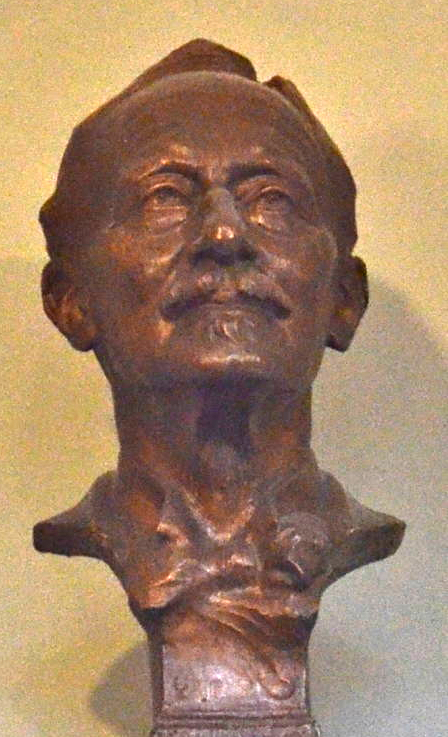Biography

Charles Robert Ashbee was born in London, the son of a prosperous city merchant. Educated at Wellington College and King's College, Cambridge, he was articled to G. F. Bodley. While working in Bodley's office Ashbee lived at Toynbee Hall, the pioneer University Settlement in Whitechapel where he initiated classes in art and craft which become the nucleus of the School of Handicraft (1887) and the Guild of Handicraft (1888). The Guild is now chiefly known for the metalwork and jewellery designed by Ashbee himself, and for the furniture made for the Grand Duke of Hesse in collaboration with the designer M. H. Baillie Scott in the workshops at Essex House in the Mile End Road.
In 1902 Ashbee undertook his grand experiment and removed the entire Guild to Chipping Campden in the Cotswolds. For a while the Guild's affairs prospered, but from 1905 the receipts from the craftwork fell off disastrously and by 1907 the company was forced into voluntary liquidation. Ashbee continued throughout this period with his architectural practice, which brought in a number of decorotive commissions to the Guild. He designed two groups of houses in Cheyne Walk, Chelsea and a number of squat, square houses in the country, some of which feuture in A Book of Cottages and Little Houses.
Furniture

- Mahogany veneered etagère
- Gallery Chair
- Cabinet with painted inside doors
- Writing Cabinet with elaborate metal pulls and hinges
- Writing Cabinet Grey Oak with painted interior and Arts and Crafts tulips
- Writing Desk with tooled lether
Cast-Iron Work
- Ashbee's "An Experiment in Cast-Iron Work" (an essay in The Studio)
- Six Cast-iron fireplaces
Metalwork


- A Gallery of Ashbee's Metalwork
- Standing Cup and Cover
- Double Loopshandled Bowl
- Christening Mug
- Standing Cup
- Silver Cup
- Two Dishes, One Covered
- Covered Dish
- Letter Rack
- Three pierced silver serving spoons
Jewelry

- A Gallery of Ashbee's Jewelry
- Necklace (1)
- Seven Brooches
- Brooch with hanging pendant
- Enameled Bruckle with Fish Designs
- Two Brooches
- Three Brooches with semi-precious stones
- Four Clasps
- Peacock pendant
Textiles and similar work
Related materials
References
Architect-Designers from Pugin to Mackintosh. Exhibition catalogue. London: The Fine Art Society with Haslam & Whiteway Ltd., 1981.
Crawford, Alan, C.R. Ashbee: Architect, Designer and Romantic Socialist. New Haven: Yale University Press, 1985. [Review]
Lambourne, Lionel. The Arts & Crafts Movement: Artists, Craftsmen & Designers, 1890-1930. Exhibition catalogue. London: The Fine Art Society, 1973.
Naylor, Gillian. The Arts and Crafts Movement: A Study of Its Sources, Ideals, and Influence on Design Theory. Cambridge: MIT Press, 1971.
Stansky, Peter, William Morris, C.R. Ashbee, and the Arts and Crafts. London: Nine Elms Press, 1984.
Last modified 12 April 2013